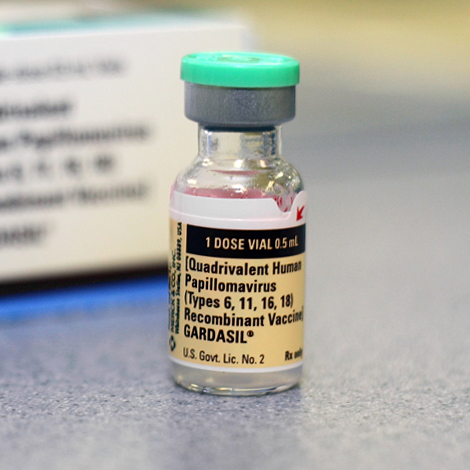Human papillomavirus (HPV) is the most common sexually transmitted infection, with an estimated 79 million Americans currently infected with the virus, according to the Centers for Disease Control and Prevention. If a high-risk HPV infection does not go away, it can lead to the development of a variety of cancers, including 91% of all cervical cancers, 70% of oropharyngeal cancers and cancers of the vulva, vagina, penis and anus.
HPV vaccination can significantly reduce the number of new cancer diagnoses linked to the virus, in addition to preventing a number of other health complications.
“Given the effect that HPV vaccination has had on cancer prevention, it is important to identify factors influencing HPV vaccination coverage,” said Bernard Fuemmeler Ph.D., associate director for population science, the Gordon D. Ginder, M.D., Chair in Cancer Research and co-leader of the Cancer Prevention and Control research program at VCU Massey Cancer Center.
Fuemmeler and his team conducted the first-ever systematic review of area-level data reported in the United States between 2006 and 2020 to determine how geography, neighborhoods and sociodemographic factors impact HPV vaccination rates among adolescents and young adults. The study was published in Cancer Epidemiology, Biomarkers and Prevention.
The CDC recommends two doses of the HPV vaccine six to 12 months apart beginning at age 11 or 12 and for everyone through age 26 if not already vaccinated. Despite this federal recommendation from health experts, Fuemmeler’s team found that, across these studies, vaccination uptake is not uniform within the population and existing studies suggest that vaccination coverage varies markedly across the U.S and within local regions of the U.S.
“Understanding how HPV vaccination coverage varies by geography can help to identify areas of need for prevention and control efforts,” said Fuemmeler, a professor in the Department of Health Behavior and Policy at the VCU School of Medicine.
Many intervention strategies have been implemented to address several of the factors that contribute to low vaccination rates, including education level, health insurance coverage, income and vaccine awareness, but those efforts are often untargeted or limited to certain areas, creating widespread geographical disparities throughout the country. For example, Fuemmeler’s research shows that HPV vaccination completion rates vary from nearly 80% in Rhode Island to less than 29% in Mississippi.
Upon completion of their review, Fuemmeler’s team proposed five recommendations and future considerations to overcome the current barriers to effectively address and improve national HPV vaccination coverage: 1) foster interdisciplinary collaborations and research to support more detailed analyses of geographic disparities in HPV vaccination coverage; 2) standardize procedures for immunization reporting systems to make information consistent across states; 3) standardize variable definitions in research on HPV vaccination coverage; 4) incorporate spatial regression modeling approaches to identify where HPV-related burdens are elevated and prevention and intervention efforts are needed; and 5) obtain data on HPV prevalence in smaller geographic areas for a more detailed understanding of HPV vaccination coverage nationwide.
“Our findings demonstrate the need to adopt geospatial, standardized and collaborative approaches in future studies that allow for the effective mapping, detection and reporting of geographic areas with low HPV vaccination coverage,” Fuemmeler said.
CDC: Vaccination coverage generally high by age 24 months
More information:
Elizabeth K. Do et al, Area-Level Variation and Human Papillomavirus Vaccination among Adolescents and Young Adults in the United States: A Systematic Review, Cancer Epidemiology Biomarkers & Prevention (2020). DOI: 10.1158/1055-9965.EPI-20-0617
Provided by
Virginia Commonwealth University
Citation:
Researchers review geographic factors that affect HPV vaccination rates (2021, January 22)
retrieved 22 January 2021
from https://medicalxpress.com/news/2021-01-geographic-factors-affect-hpv-vaccination.html
This document is subject to copyright. Apart from any fair dealing for the purpose of private study or research, no
part may be reproduced without the written permission. The content is provided for information purposes only.



